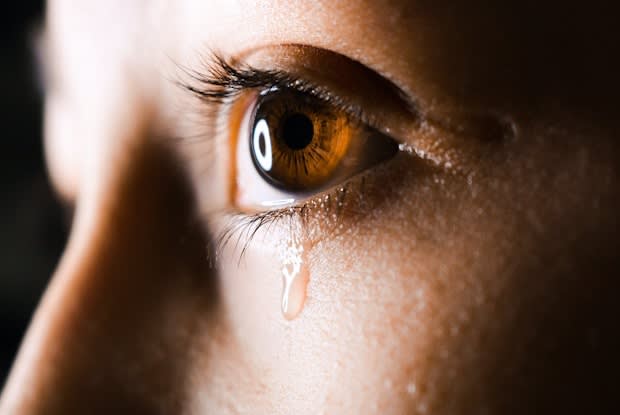Table of Contents
V. Premenstrual Dysphoric Disorder
VI. Seasonal Affective Disorder
Understanding Depression
As mental health awareness continues to grow, more research into the rate of depression is becoming available. The National Health and Nutrition Examination Survey found that between 2013 and 2016, around 8.1 percent of adults over 20 in the United States had experienced depression in a given 2-week period. The Centers for Disease Control have also found that women are twice as likely to experience depression and the prevalence of this disorder decreases as household income increases. [1] This information is extremely helpful to better understand the often misunderstood disorder that is depression.
Depression can be difficult to diagnose and pin down because it can be caused by a combination of factors. The chemical makeup of your brain, genetics, lifestyle, and life events can result in persistent feelings of sadness. Those with depression often have their own specific triggers, but common causes of depression can include:
- Traumatic or stressful events
- Change in brain chemistry
- Changes in the body’s hormones
- Blood relatives with depression
- History of mental health disorders
- Abuse of alcohol or recreational drugs
- Certain personality traits (low self-esteem, self-critical)
Symptoms of depression can vary from person to person. Depression is typically diagnosed if you experience at least five of these symptoms for a prolonged period. These symptoms can occur every day, every month, or every year. They can include: Depression symptoms can also change based on age. Children and older adults may present symptoms differently. Signs of depression in children and teens may include: Older people, especially those who live alone, experience depression at higher rates. Depression often goes undiagnosed or untreated in older adults and they may never seek help. Signs of depression in this group can include: If left untreated, depression can take a terrible toll on your mind and body, as well as your friends, and loved ones. Luckily, there are many medications out there like Lexapro and Cymbalta to help battle the difficult symptoms of depression. Depression encompasses several conditions, so read on to learn more about the different types of depressive disorders. Major depression, also known as clinical depression, affects around 6.7 percent of the American population over the age of 18. Persistent low mood and profound sadness are the most common symptoms. Major depression is more than just a bad day; it involves persistent feelings of sadness that last at least two weeks. [2] Major depression can be caused by stressful life events, but it often does not appear connected to a specific event. Major depression can also occur in episodes, which result in potentially dangerous symptoms. Those experiencing a major depressive episode may become out of touch with reality and may have psychotic symptoms, including delusions and hallucinations. [2] In many cases, depressive behaviors may present themselves early in adolescence and continue into adulthood. If major depression gets out of control, it can lead to a neglect of personal hygiene in the affected person, their children, and possibly their pets. If you feel you are experiencing clinical depression, contact your healthcare provider. [3] As mentioned above, depression can be caused by hormone fluctuations. Typically, women have more hormone changes throughout their life, so they may experience depression more frequently than men. This is especially true in the case of women who have recently given birth. It is fairly common to experience “baby blues” after giving birth, but sometimes those feelings develop into a long-lasting form of depression known as postpartum depression. Bringing a new life into the world can trigger a whole slew of new emotions and it is not uncommon to feel overwhelmed at this time. Developing postpartum depression does not signify the competence of a mother. This disorder affects many mothers and may interfere with their ability to care for their baby and handle daily tasks. It is vital for new parents to seek the help of a doctor if they are feeling depressed after a new arrival. Postpartum can also occur before the baby is delivered and may begin up to a year after birth. Symptoms of postpartum depression can include: This type of depression is a health problem that affects women. It is similar to premenstrual syndrome (PMS) but much more severe. PMDD occurs a week or two before a woman starts their period because hormone levels begin to fall after ovulation. Many women may misconstrue PMDD as run-of-the-mill PMS, so it is important to pay attention to your symptoms. PMDD affects up to 5 percent of women of childbearing age. [4] Symptoms may include: These symptoms appear similar to PMS, but the severity and frequency of these symptoms differ. Those with PMDD experience symptoms for longer periods of time than average PMS and can lead to severe irritability, depression, and anxiety. [4] Seasonal affective disorder is a depressive condition that occurs in conjunction with seasonal weather changes. Those with SAD most often live in areas of the country where the fall and winter months are dark and gloomy. A lack of sunlight can sap your energy and alter your mood. Being stuck inside during the winter months can be difficult, but it is vital to pay attention to your mental health. If left untreated, the feelings of depression may bleed over into the spring and summer months. Signs of SAD can include: Many people misinterpret SAD with “winter blues,” but if you feel down for weeks at a time, then your condition may be more serious. Luckily, you can purchase a phototherapy light that may improve symptoms by simulating sunshine. Treatment for depression varies from person to person. It is essential to be honest and open with your doctor so they can examine your symptoms and determine which treatments are right for you. Typically, antidepressants are prescribed to help control symptoms of anxiety and depression. Common prescriptions include Lexapro and Cymbalta, which work by stimulating feel-good hormones (serotonin) in the brain. These drugs prevent serotonin from being absorbed into the brain as quickly, which can improve mood. Medications do not solve every aspect of depression, so therapies are also recommended. Psychotherapy can be beneficial to depressive people because it can help build coping mechanisms to better deal with life’s ups and downs. Talk to your doctor about therapies that may be helpful to you. [5] The content provided in this article is based on thorough research and in some cases, reviewed by a medical professional. Our goal for the information is to provide helpful, general health informational. It is not intended as a substitute for professional medical advice.
Do I Have Depression? Common Symptoms

Major Depression
Postpartum Depression

Premenstrual Dysphoric Disorder (PMDD)
Seasonal Affective Disorder (SAD)

Effective Treatment Options for Depression
